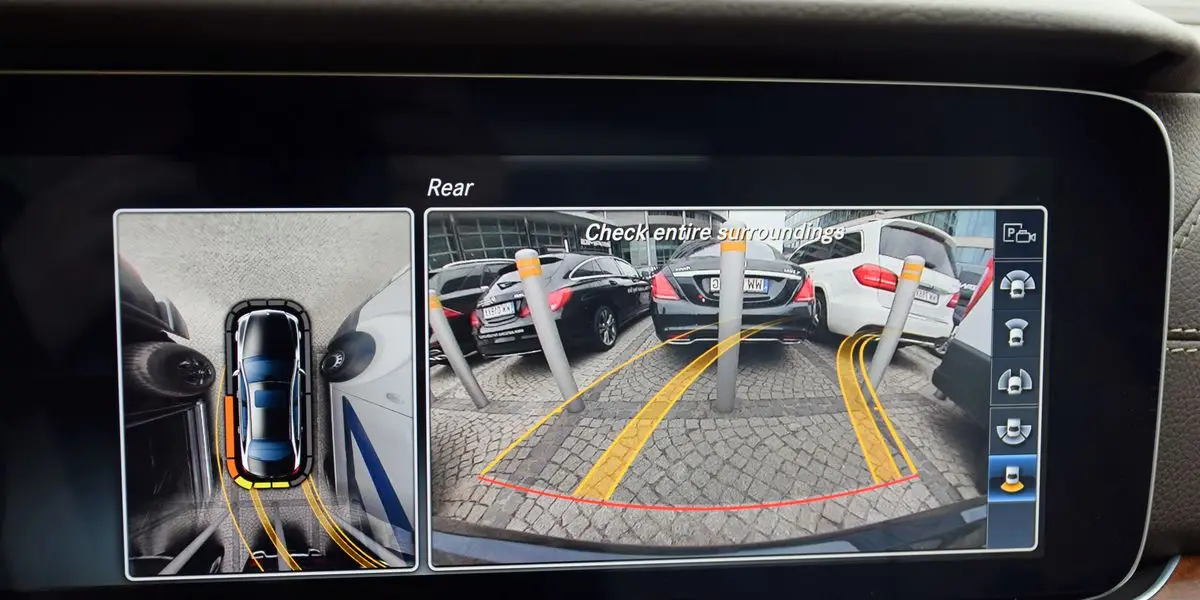How does a car’s parallel parking assistant system work?


Car Parallel Parking Assistant: How Does It Work?
Automobile technology has come a long way in recent years, and one of the most impressive advancements is the car parallel parking assistant system. This innovative feature takes the stress out of parallel parking by using a combination of sensors, cameras, and advanced algorithms to guide the driver through the process. In this article, we will explore how a car’s parallel parking assistant system works, the technology behind it, and the benefits it offers to drivers.
Understanding the Technology
The car parallel parking assistant system is part of a larger category of advanced driver assistance systems (ADAS) that aim to enhance safety and convenience on the road. These systems use a combination of sensors, cameras, and computer algorithms to assist drivers in various tasks, such as parking, lane keeping, and collision avoidance.
Parking Sensors
At the heart of the parallel parking assistant system are parking sensors. These sensors are typically located on the front and rear bumpers of the car and use ultrasonic or electromagnetic technology to detect objects in the vehicle’s vicinity. When the driver engages the parallel parking assistant, these sensors scan the area around the car to determine the available parking space and identify any obstacles.
Automated Parking Process
Once the parking sensors have detected a suitable parking space, the automated parking process begins. The car’s parallel parking assistant system takes control of the steering wheel, while the driver remains responsible for controlling the accelerator and brake pedals. The system uses the information gathered by the parking sensors to calculate the necessary steering inputs to maneuver the car into the parking space.
Camera Assistance
In addition to parking sensors, many car parallel parking assistant systems also utilize cameras to provide visual assistance to the driver. These cameras are typically mounted on the side mirrors or rearview mirror and provide a live feed of the parking area. The driver can use this feed to monitor the parking process and ensure that the car is aligned correctly.
Advanced Algorithms
The success of a car’s parallel parking assistant system relies heavily on the advanced algorithms that control the steering inputs. These algorithms take into account various factors, such as the size of the parking space, the position of nearby obstacles, and the dimensions of the car itself. By analyzing this information in real-time, the system can make precise steering adjustments to navigate the car into the parking space.
The Benefits of Parallel Park Assist
The car parallel parking assistant system offers several benefits to drivers, making it a sought-after feature in modern vehicles. Here are some of the key advantages:
- Increased Safety: Parallel parking can be a challenging task, especially for inexperienced drivers. The parallel parking assistant system reduces the risk of accidents by providing accurate guidance and preventing collisions with other vehicles or objects.
- Time and Effort Savings: Parallel parking can be time-consuming and frustrating, especially in busy urban areas. With the parallel parking assistant, drivers can park their cars quickly and effortlessly, saving time and reducing stress.
- Parking in Tight Spaces: The parallel parking assistant system allows drivers to park in tight spaces that would otherwise be difficult or impossible to access. This is particularly useful in crowded parking lots or narrow streets.
- Improved Confidence: For drivers who lack confidence in their parallel parking skills, the parallel parking assistant system provides a boost of confidence. Knowing that the car will guide them through the process successfully can help alleviate anxiety and make parking a more enjoyable experience.
Conclusion
In conclusion, the car parallel parking assistant system is a remarkable example of how automobile technology continues to evolve. By combining parking sensors, cameras, and advanced algorithms, this system takes the stress out of parallel parking and offers numerous benefits to drivers. Whether it’s increased safety, time savings, or improved confidence, the parallel parking assistant system is a valuable feature that enhances the overall driving experience. So, the next time you find yourself struggling to parallel park, consider investing in a car equipped with this advanced technology.
Recent Posts
How do I create an engaging and informative online quiz or assessment?
Creating an engaging and informative online quiz or assessment can be a powerful tool for… Read More
What are the most effective methods for managing and reducing work-related stress in the hospitality industry?
Work-related stress is a common issue in the hospitality industry, where employees often face long… Read More
How can I improve my assertiveness and communication skills in a leadership position?
In a leadership position, assertiveness and effective communication skills are crucial for success. Being able… Read More
What are the key elements of a successful employee recognition and rewards program?
Employee recognition and rewards programs play a crucial role in motivating and engaging employees, as… Read More
How do I effectively manage and respond to customer feedback and reviews?
Customer feedback and online reviews play a crucial role in shaping a company's reputation and… Read More
What are the best strategies for effective time management as a stay-at-home parent?
Effective time management is crucial for stay-at-home parents who juggle multiple responsibilities on a daily… Read More